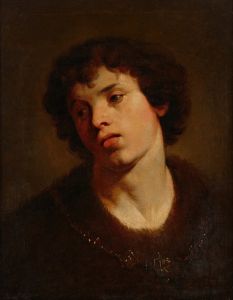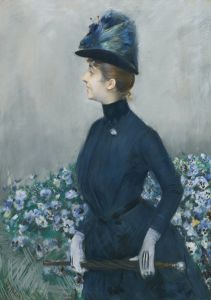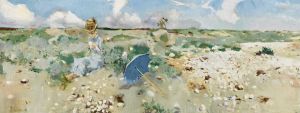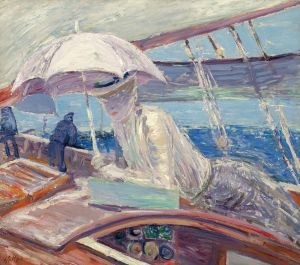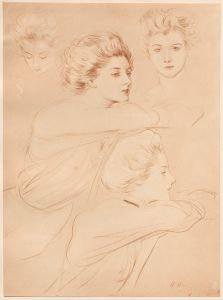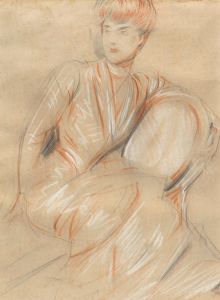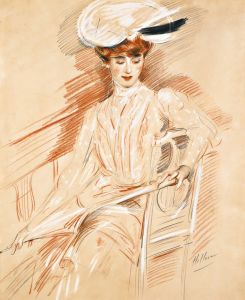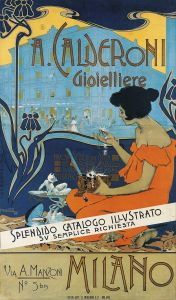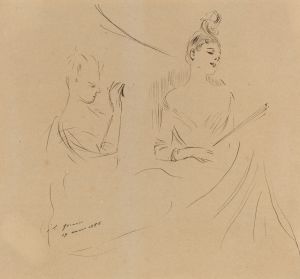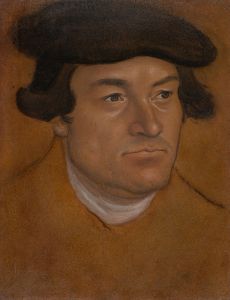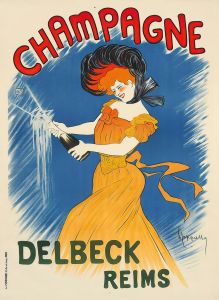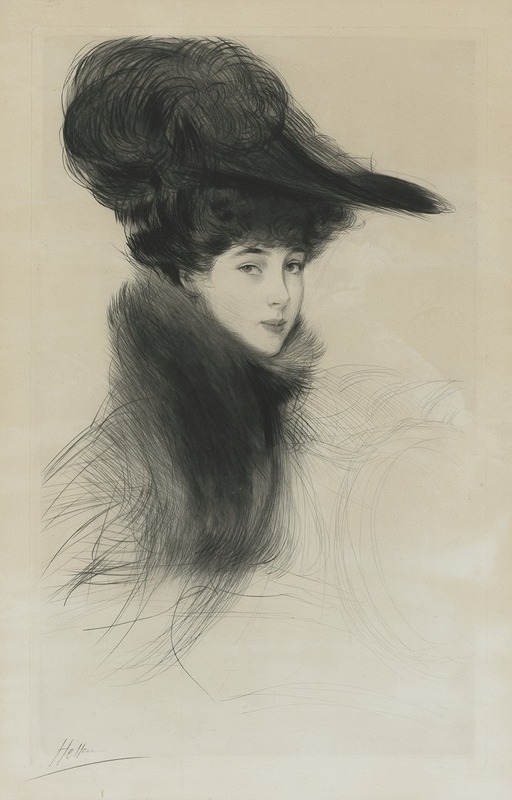
Portrait of Consuelo Vanderbilt, The Duchess of Marlborough
A hand-painted replica of Paul César Helleu’s masterpiece Portrait of Consuelo Vanderbilt, The Duchess of Marlborough, meticulously crafted by professional artists to capture the true essence of the original. Each piece is created with museum-quality canvas and rare mineral pigments, carefully painted by experienced artists with delicate brushstrokes and rich, layered colors to perfectly recreate the texture of the original artwork. Unlike machine-printed reproductions, this hand-painted version brings the painting to life, infused with the artist’s emotions and skill in every stroke. Whether for personal collection or home decoration, it instantly elevates the artistic atmosphere of any space.
Paul César Helleu was a renowned French artist known for his portraits of the Belle Époque society. One of his notable works is the "Portrait of Consuelo Vanderbilt, The Duchess of Marlborough." This painting captures Consuelo Vanderbilt, an American socialite who became the Duchess of Marlborough through her marriage to Charles Spencer-Churchill, the 9th Duke of Marlborough.
Consuelo Vanderbilt was born on March 2, 1877, into the wealthy Vanderbilt family in New York City. Her marriage to the Duke of Marlborough in 1895 was a significant social event, often described as a "marriage of convenience" that united American wealth with British aristocracy. Despite the personal challenges in her marriage, Consuelo became a prominent figure in British society and was known for her beauty, poise, and charitable work.
Paul César Helleu, born on December 17, 1859, in Vannes, France, was an artist celebrated for his elegant portraits of fashionable women. He was a master of drypoint, a printmaking technique, and also worked with pastels and oils. Helleu's work is characterized by its graceful lines and the ability to capture the essence of his subjects, making him a sought-after portraitist during his time.
The "Portrait of Consuelo Vanderbilt, The Duchess of Marlborough" exemplifies Helleu's style, showcasing his ability to depict the elegance and sophistication of his subjects. The painting is noted for its delicate lines and the subtle use of color, which highlight Consuelo's refined features and fashionable attire. Helleu's portrayal of Consuelo reflects the opulence and social status she embodied as a duchess.
This portrait is part of a larger body of work by Helleu that includes portraits of other notable figures of the Belle Époque, such as Coco Chanel and the Marchesa Casati. Helleu's portraits are celebrated for their ability to capture the spirit of the era, characterized by its cultural refinement and the prominence of high society.
Consuelo Vanderbilt's life and marriage have been the subject of much interest and discussion, partly due to her memoir, "The Glitter and the Gold," published in 1953. In her memoir, she provides insights into her life as a duchess and her experiences within the British aristocracy. Her story, along with Helleu's portrait, continues to fascinate those interested in the intersection of American wealth and European nobility during the late 19th and early 20th centuries.
The painting remains a testament to both Helleu's artistic talent and Consuelo Vanderbilt's enduring legacy as a symbol of transatlantic social connections. While the exact location of the painting may not be widely documented, Helleu's works are held in various private collections and museums, reflecting the lasting appeal of his art.
Overall, the "Portrait of Consuelo Vanderbilt, The Duchess of Marlborough" is a significant piece that captures a moment in history, illustrating the cultural and social dynamics of its time through the lens of one of the era's most skilled portraitists.





